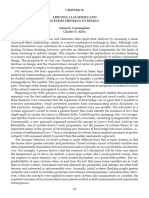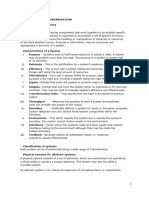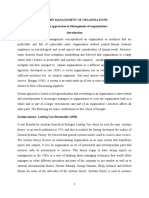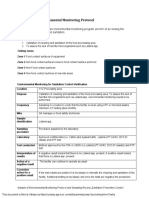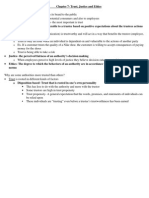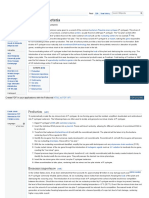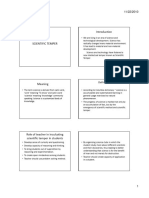0% found this document useful (0 votes)
62 views16 pagesSystems Theory in Manufacturing
Systems theory views a system as comprising interconnected parts that work together to achieve a common goal. Key aspects of systems include inputs, outputs, feedback between components, and relationships with the external environment. Systems can be open, closed, or semi-open/closed depending on their permeability. The systems approach analyzes objects, situations, and matters by considering the general system and relationships between constituent parts.
Uploaded by
Sandra Rojas GabinoCopyright
© © All Rights Reserved
We take content rights seriously. If you suspect this is your content, claim it here.
Available Formats
Download as PDF, TXT or read online on Scribd
0% found this document useful (0 votes)
62 views16 pagesSystems Theory in Manufacturing
Systems theory views a system as comprising interconnected parts that work together to achieve a common goal. Key aspects of systems include inputs, outputs, feedback between components, and relationships with the external environment. Systems can be open, closed, or semi-open/closed depending on their permeability. The systems approach analyzes objects, situations, and matters by considering the general system and relationships between constituent parts.
Uploaded by
Sandra Rojas GabinoCopyright
© © All Rights Reserved
We take content rights seriously. If you suspect this is your content, claim it here.
Available Formats
Download as PDF, TXT or read online on Scribd
/ 16























